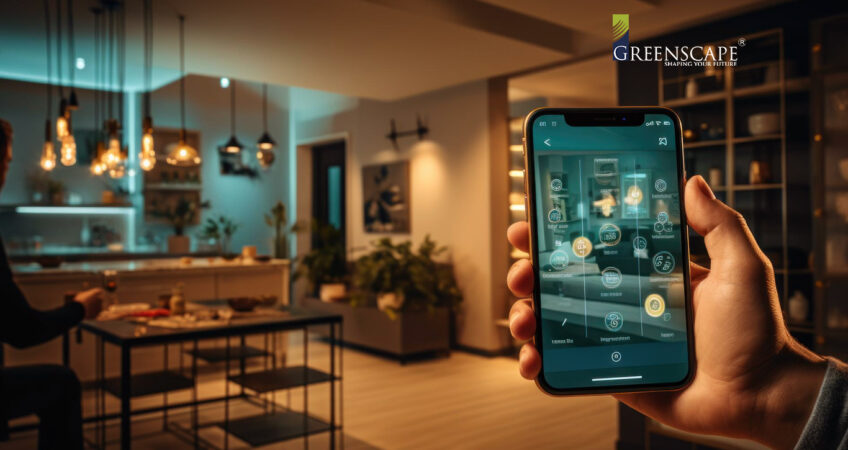Creating a Smart Home in India: Essential Technologies and Practical Steps for Modern Living

The concept of smart homes has moved from the realm of science fiction to a tangible reality, revolutionizing the way we live. In India, where technology adoption is rapidly increasing, smart homes are becoming a desirable feature in modern living. For those involved in Real Estate in India, understanding and implementing smart home technologies can significantly enhance property value and appeal.
This blog provides a comprehensive guide on how to create a smart home in India, exploring essential technologies and practical steps to transform any residence into a futuristic abode.
THE GROWING DEMAND FOR SMART HOMES IN REAL ESTATE
As urbanization continues to reshape the landscape of Real Estate in India, there is a rising demand for homes that offer not just comfort and convenience but also advanced technological integration. Smart homes meet this demand by providing residents with enhanced control, security, and energy efficiency. By incorporating smart technologies, developers can offer cutting-edge solutions that cater to the tech-savvy generation, making properties more attractive and competitive in the market.
ESSENTIAL TECHNOLOGIES FOR CREATING A SMART HOME
Smart Lighting:
Smart lighting systems are a fundamental aspect of a smart home. These systems allow homeowners to control lighting remotely using their smartphones or voice commands. Features like automated lighting schedules, motion-sensor activation, and the ability to adjust brightness and color can significantly enhance the living experience.
Smart Security Systems:
Security is a top priority for homeowners, and smart security systems offer advanced protection. These systems include smart cameras, video doorbells, motion detectors, and smart locks, all of which can be monitored and controlled remotely.
Smart Thermostats and Climate Control:
Managing home temperature efficiently is key to comfort and energy savings. Smart thermostats learn user preferences and adjust heating and cooling accordingly. These devices can be controlled via mobile apps, ensuring optimal climate control while reducing energy consumption.
Smart Appliances:
Integrating smart appliances into your home can elevate convenience and efficiency. From smart refrigerators and washing machines to smart ovens and vacuum cleaners, these devices can be controlled remotely and offer features like energy monitoring, maintenance alerts, and automated operations.
Voice Assistants and Smart Hubs:
Voice assistants like Amazon Alexa, Google Assistant, and Apple Siri are central to a smart home ecosystem. These devices act as hubs, connecting and controlling various smart devices through voice commands. They also provide information, manage schedules, and play entertainment content, making daily tasks more manageable.
Smart Entertainment Systems:
Transforming your home entertainment setup with smart technologies can greatly enhance your leisure time. Smart TVs, streaming devices, and sound systems that integrate with voice assistants offer seamless control and high-quality experiences.
PRACTICAL STEPS TO TRANSFORM YOUR HOME
Assess Your Needs:
Begin by evaluating which aspects of your home life you want to enhance with smart technology. Prioritize areas such as security, lighting, climate control, and entertainment.
Choose Compatible Devices:
Select smart devices that are compatible with each other and can be integrated into a unified system. Ensure that they support the preferred voice assistant or smart hub you plan to use.
Plan Your Network:
A reliable Wi-Fi network is crucial for a smart home. Invest in a robust router and consider adding range extenders or mesh Wi-Fi systems to ensure consistent connectivity throughout your home.
Install and Configure:
Follow manufacturer instructions to install and configure each device. Many devices come with user-friendly apps that guide you through the setup process. Ensure that each device is properly connected to your smart hub or voice assistant.
Create Automation Routines:
Use automation features to create routines and schedules that suit your lifestyle. For example, you can set your lights to turn on gradually in the morning or have your thermostat adjust automatically based on your daily patterns.
Creating a smart home in India is a step towards embracing the future of living. With the right technologies and a thoughtful approach, homeowners can enjoy unparalleled convenience, security, and efficiency. For those in real estate in India, integrating smart home features can make properties highly desirable in a competitive market. By understanding the key elements and practical steps involved, anyone can transform their home into a smart, connected, and forward-thinking space.



